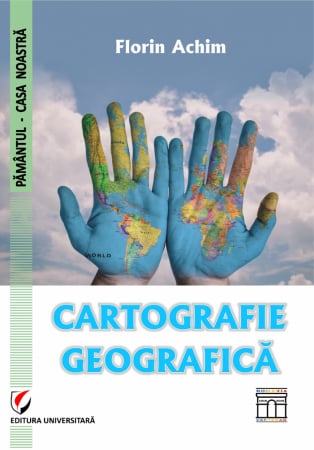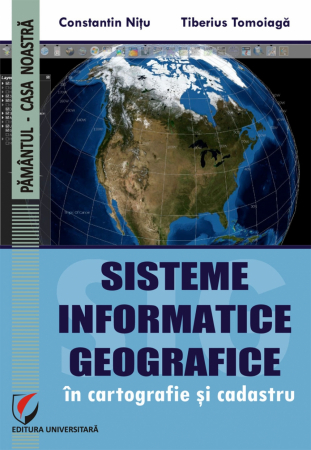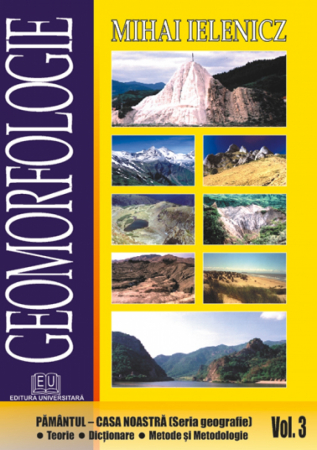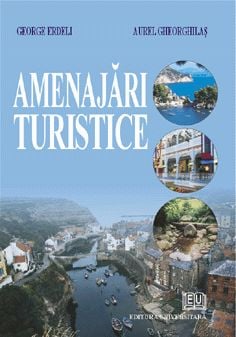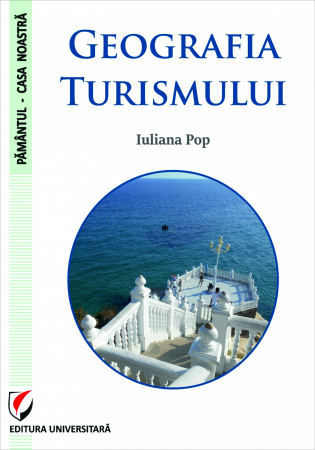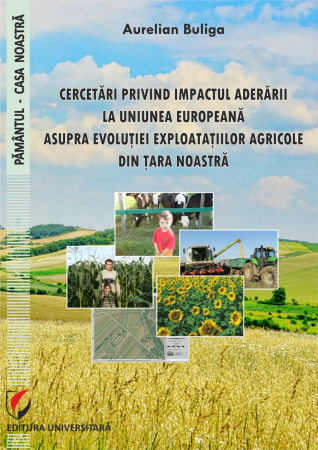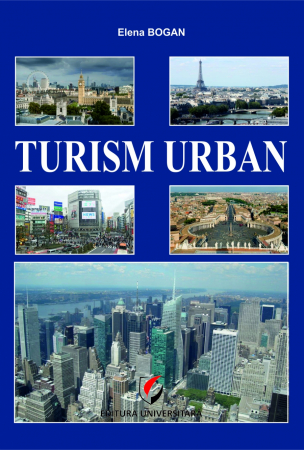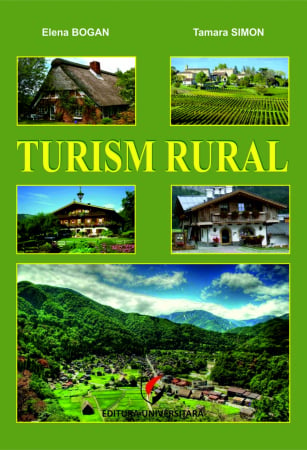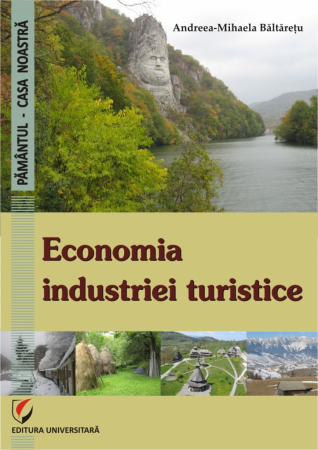ISBN: 978-606-591-469-8
DOI: 10.5682/9786065914698
Publisher year: 2012
Edition: I
Pages: 81
Publisher: Editura Universitara
Author: Elena Bogan, Andreea-Loreta Cercleux
- Description
- Download (1)
- Content
- Authors
- Reviews (0)
BUCHAREST AND SURROUNDING AREA
The natural
Elements of geology and relief. Genesis and morphological evolution are closely linked to the geological and natural conditions of different geological eras. Action modeling, which occurred in several stages, different in size and intensity, is highlighted by the early Quaternary. This phase was interrupted because of a shallow lake covering territory that is today the city of Bucharest. Followed by the accumulation of deposits clogging Lake deluvial-proluvial that led to the formation of surface dry behind Vlăsiei Plain. Feature is the formation of Pliocene age, consisting of marly limestones, marls, clays, and sands. Pliocene lake with Levantine last phase is where formations were deposited fluvial-lacustrine characterizing lithological column just below the deposit leossoid. Pliocene and Quaternary deposits sequence shows that there were negative movements continue vertically to Late Pleistocene, after which the southern part especially was a lift that caused the formation of terraces (Romania Geography, Vol V, 2005).
Quaternary formations, which covers the Pliocene consist of gravels, sands, clays and deposits leossoide. Are characteristic of Colentina gravel (Pleistocene) in river basins Colentina and birds leossoide older deposits (Middle Pleistocene) newer leossoide deposits (Pleistocene and Holocene) (Geological Map 1: 200,000). Actions of external agents, depending on the geological, led to a special modeling of the relief.
The main events were shaping data alluvial processes, erosion, silting of valleys, compaction leossoide deposits. Bucharest is the Vlăsiei Plain, which is named after the famous Codri Vlăsia and was first highlighted by Valsan G. (1915) who gave the name. In 1935, V. Mihailescu Plain Vlăsiei divided into two sections: Plain Plain Vlăsiei Vlăsiei south and north. Cotet P. (1963) divides everything into two sectors Plain Vlăsiei but calls them Snagov Plain (in the north) and Plain Bucharest (in the south). After geographical features, Plain Vlăsiei is divided into three major units namely Snagov Plain, Plain and Plain Colentina Câlnăului. Plain Vlăsiei is in the center of the Romanian Plain, specifically in the Arges River, and is a plain tabular (horizontal).
Vlăsiei Plain comprises the southern Plains Ialomiţei and has a central position in the Romanian Plain. Altitudes reaching a maximum of 120-123 m in the north (for Ialomita and Poienari Valley) and a minimum of about 30 m in the south, the Arges valley. Plain Colentina altitude varies between 100 and 120 m in the north-west and between 65-70 m in the southeastern part Pantelimon - Cernica - Căldăraru, very little fragmented.
Major relief - appears as a piedmont plain-terminal complex consists of two cones, one of Arges and Dambovita and one of Ialomiţei with Sweet Cricovul in part, and Prahova and Teleajen. In it were carved valleys that inter-field or fields divided (fig. no. 1) (Romanian Geography, Vol V, 2005).
Both in the Bucharest area and its surroundings, the nature of plain valleys, mainly reflected in the relatively large meandering courses. Valleys are wide, flared, 1-2 meander terraces (± 2-4 and 8-12 m), with intense mineral and biogenic clogging phenomena.
Interfluve area is affected only by dales compaction processes, which in the Otopeni - room - Mogoşoaia have a high frequency. Dales are shallow (1-3 m). Due to their bottom sealing spring when there is excess moisture following rain and melting snow, dales are covered with water, which makes these areas unsuitable to agriculture. Under leossoide deposits, which can reach thicknesses from 2 m to 10 m even, meet a layer of sand and gravel one whose thickness can reach up to 20 m Colentina fragment Valley is a valley plain Colentina and area feature plain, with a very small drop in longitudinal profile, action which sparked a fairly large meandering course.
After the general appearance and morphological features, Plain Colentina divides itself into two sections: the north-east (Field Colentina-bird) and the southwest. Colentina Valley has a relatively smooth longitudinal profile because the strong wind and is accompanied by numerous lakes formed by the action of erosion that takes place meanders NW-SE direction. Valley has a strong asymmetry of banks with more steep right bank and higher. On the left side of the valley is carried terrace level 4 to 6 m which add a floodplain terrace of 2-3 m between cities Pantelimon and Cernica terraces disappear, both sides became steep valley overlooking lakes that are installed Panteleimon and Cernica (Gr Posea, I. Stefanescu, 1984).
-
Ghid aplicaţie practică. Bucureşti şi zona periurbană
Download
BUCUREŞTI ŞI ZONA PERIURBANĂ / 7
Cadrul natural / 7
Bucureşti – localizare şi aspecte istorice / 14
Economia municipiului Bucureşti / 15
Zona periurbană a Bucureştiului – caracteristici generale / 16
Economia zonei periurbane a capitalei / 18
Transporturile în zona periurbană a Bucureştiului / 20
TRASEELE PRACTICII DE SPECIALITATE - MODULUL BUCUREŞTI / 22
Ziua 1. Pieţele publice / 22
Ziua 2. Centrul vechi al Bucureştiului – zona Lipscani şi Calea Victoriei / 26
Ziua 3. Centrele comerciale /33
Ziua 4. Spaţiile verzi / 36
Ziua 5. Cartarea unor zone din municipiul Bucureşti / 42
TRASEELE PRACTICII DE SPECIALITATE – MODULUL ZONA PERIURBANĂ A BUCUREŞTIULUI /62
Ziua 1. Bucureşti – Pantelimon - Cernica - Brăneşti / 62
Ziua 2. Bucureşti – Mogoşoaia - Buftea / 66
Ziua 3. Bucureşti – Moara Vlăsiei - Snagov - Gruiu / 71
Ziua 4. Bucureşti – Otopeni / 75
Ziua 5. Bucureşti – Ciorogârla / 77
BIBLIOGRAFIE / 79
Andreea-Loreta Cercleux
Customer Support Monday - Friday, between 8.00 - 16.00
0745 200 718 0745 200 357 comenzi@editurauniversitara.ro
6359.png)
![Guide practical application. Bucharest and suburban areas [1] Guide practical application. Bucharest and suburban areas [1]](https://gomagcdn.ro/domains/editurauniversitara.ro/files/product/large/ghid-aplicaie-practic-bucureti-i-zona-periurban-1655-429252.jpg)

